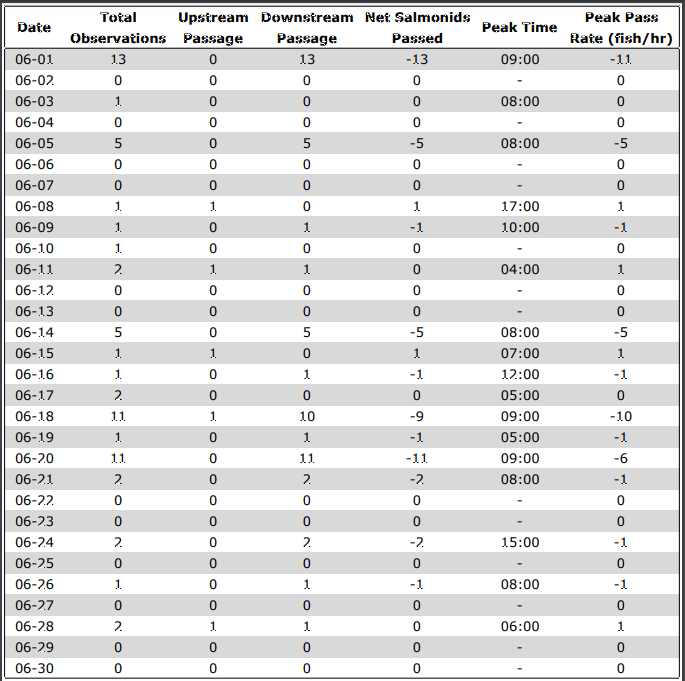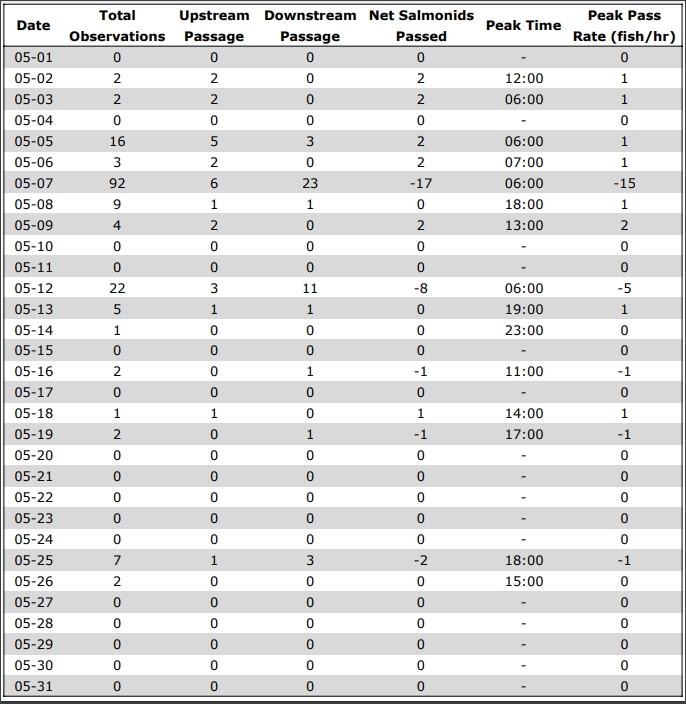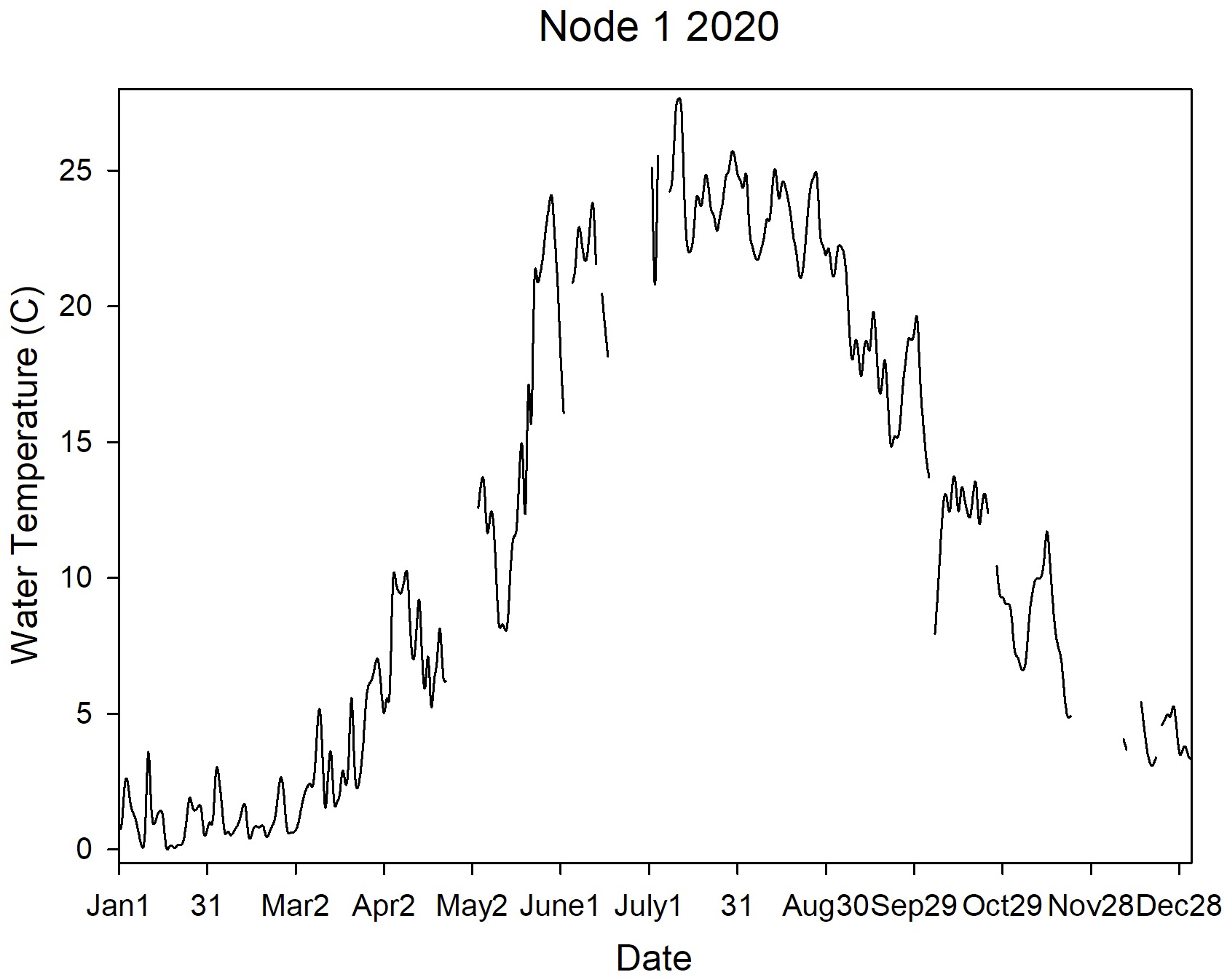Brown Trout (Salmo trutta) in the Kananaskis River
We used radio-telemetry to investigate detailed movement and summer habitat of brown trout (Salmo trutta) (size range 157 - 488 mm TL, n = 18) in the Kananaskis River, Alberta. Flows in the Kananaskis River respond to pulsed daily discharge from an upstream hydroelectric generating facility (range 0.15 - 25 m3.s-1). Wetted area available for brown trout doubled during periods of high flow. Fluctuating river levels did not appear to influence the degree to which brown trout moved within the study site. However, there was evidence that brown trout used cover and pools more as discharge increased. During high flow conditions, brown trout used similar depths (63 cm), and significantly lower surface water velocities than during low flow conditions. Brown trout also moved closer to shore into interstitial spaces among woody debris and root complexes during high flow. Pool habitats were used most often compared to all other habitat types combined. Pools with large woody debris accounted for 75 % of all habitat observations. Woody debris was used more often than all other cover types. Results of the study indicate that the effects of river regulation on brown trout appear to have been moderated by woody debris in pools and along river banks, that provided refuge from high water velocities during periods of high flow.






























































